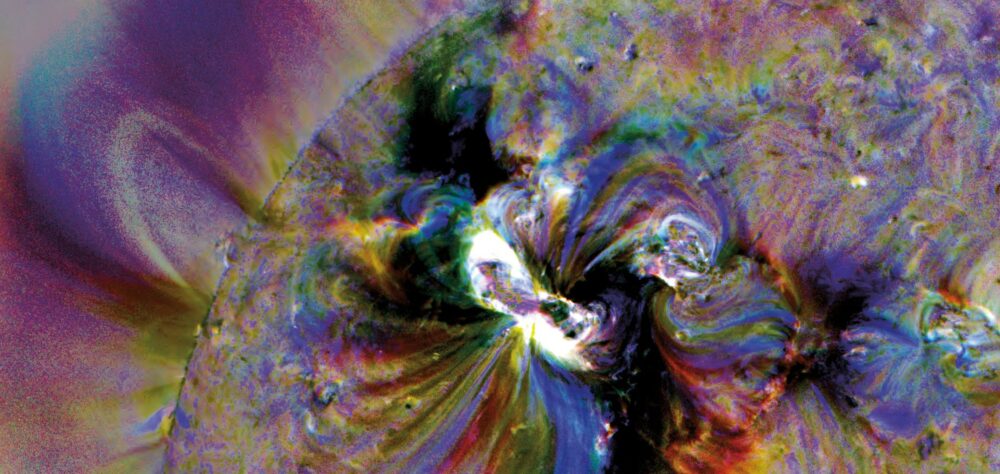Scientists from Skoltech Center for Digital Engineering spoke at the second workshop of the International Space Sciences Institute (ISSI)
Digital Engineering Center's director, associate professor Tatiana Podladchikova (invited member) and PhD student and employee Galina Chikunova (early-career scientist) took part in the second workshop of the International Space Sciences Institute (ISSI) on “Coronal dimmings and their relevance to the physics of solar and stellar coronal mass ejections” in Bern, Switzerland. The team of ISSI workshop, supported by European Space Agency and Swiss Space Agency, includes also representatives of top international universities and companies from Europe, UK, USA, and China.

Coronal mass ejections (CMEs) are giant billion-ton magnetic plasma clouds expelled from the Sun that cause severe geomagnetic storms and spectacular polar auroras. However, the early evolution of CMEs, in particular Earth-directed ones, is difficult to trace with traditional coronagraphs and the estimation of CME properties is also challenging due to projections errors. The most distinct phenomena associated with CMEs are coronal dimmings - dark spots observed in the extreme-ultraviolet and soft X-rays that are associated with the loss of substance in the solar corona during the ejection of plasma. The ISSI workshop team performs detailed multi-disciplinary studies on how the unique potential of coronal dimmings could be used for detection and characterization of solar and stellar CMEs. Skoltech team presented new methods of using dimmings as an early indicator of the CME propagation direction, 3D reconstructions and kinematics of associated extreme ultraviolet waves, studies on dimming lifetime, how and when does the solar corona recover after a CME eruption, how long are CMEs/flux ropes still connected to the Sun. The results include also contributions of PhD student and center employee Shantanu Jain.
The team is currently working jointly on a number of case studies on coronal dimmings and their relevance in better understanding and characterizing solar and stellar CMEs.
